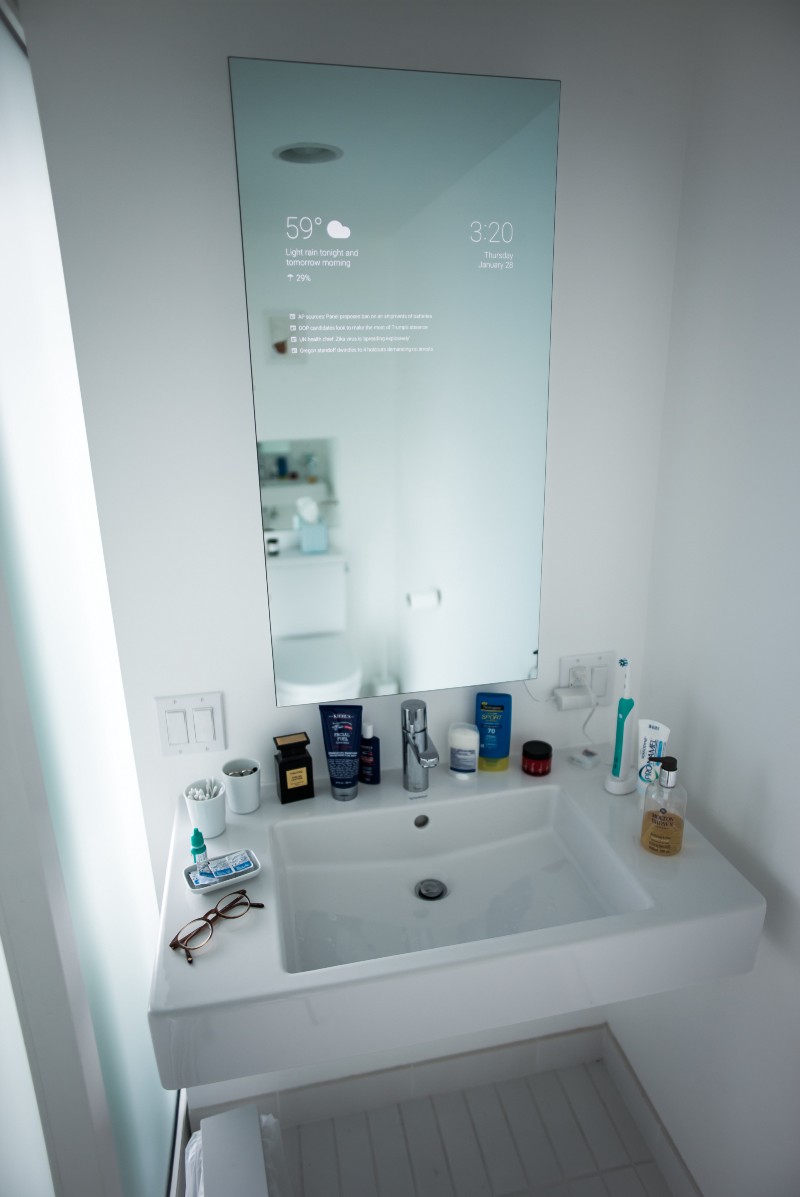A Google engineer, Max Braun creates one of the best innovative gadget – a smart bathroom mirror. Using a two-way mirror, an ultra thin display and an Amazon Fire TV Stick, Max Braun created a bathroom mirror which subtly shows the date, time, weather forecast and news headlines. The thin display is embedded between the mirror an
d medicine cabinet door, while a nearby shaving plug powers it.
Braun explained in a blog post : Sometime late last year I realized that I wanted my ordinary bathroom mirror to be more like the future we were promised in the movies. There doesn’t seem to be anyone selling the product I was looking for. The individual parts, however, were fairly easy to get. A number of people have done similar custom builds recently, but I had something different in mind. So I ordered myself a two-way mirror, a display panel and controller board, plus a bunch of components and arts & crafts supplies
Braun is a Google software engineer who previously worked at the search giant’s Google X labs, where off-the-wall projects like Glass and autonomous cars were developed, according to ibtimes. Although this list of things he used to make this smart bathroom mirror sounds incredibly simple, Braun admits: “In reality there was quite a bit of experimentation and some dead ends before I got to this set of parts”. “It may look finished from the outside, yet by no means final”.
However Max Braun says that the software contains just “a few hundred lines of code” and he is still experimenting with different hardware to run it all.


Comments
Post a Comment